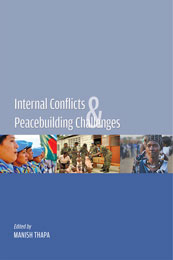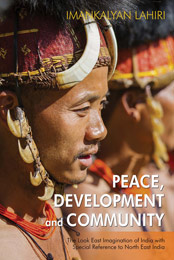The Naga insurgency, considered the mother of all insurgencies in North East India, is also the world’s oldest unresolved armed conflict in modern times. A number of government-led initiatives in the form of accords and agreements have been taken in the past to find a permanent solution to the issue; however, due to its highly complex nature it has not been resolved till date. One such recent attempt – the signing of the Framework Agreement between the Government of India and one of the Naga insurgent outfits, the National Socialist Council of Nagalim (Isak and Muivah) (NSCN-IM) – is yet to fructify into an acceptable agreement. The complexity of the Naga insurgency stems from the varying territorial perspectives, differing historical interpretations, demographic and socio-political faultlines, governance issues, external linkages, and the lack of development. Scholars and subject experts have studied most of the factors earlier, but what has hitherto remained inadequately researched in the domain of demography, is the primacy of the ‘tribal factor’.
This book is the result of two years’ research at the Institute for Defence Studies and Analyses, coupled with personal experiences. This in no way is an all-encompassing research work on the subject. Research for the book is based on findings through communication and the ground situation, viewed through the prism of history and varying perceptions. It mainly focuses on the role and the relevance of the tribal factor in the quest for Nagalim.
Pradeep Chhonkar
Brig. Pradeep Singh Chhonkar, SM, VSM is a serving Infantry Officer. He has rich experience of Counter-insurgency Operations in both the North East and Jammu and Kashmir. Among other staff and command appointments, he has served as a staff officer in the Directorate General of Military Intelligence, where he was responsible for integrated intelligence analysis particularly pertaining to insurgency in the North East. He has undertaken a number of research projects in various domains related to insurgency dynamics in North East India. He has spent considerable time studying security-related issues in the North East.
Brig. Chhonkar has researched on a wide range of topics including “India’s Nuclear Deterrence Policy” in 2004 and “Emergence of Red Corridor in the Indian Heartland – Implications on National Security: Should the Army Wait or Get Involved”, in 2012. He attended the Brazilian Army International Strategic Studies Course at Rio de Janeiro, in 2014, where he authored a number of papers and conducted research on "New Paradigm of Terrorism in 21st Century".
Contents
Preface
Introduction
1. Who are the Nagas?
2. The Quest for Nagalim
3. Tribalism vs Nagaism
4. Response to the Quest for Nagalim by Naga Tribes outside Nagaland and Non-Naga Ethnic Groups
5. Role of Tribal Construct in Resolving the Naga Issue
6. Recommendations
Appendices
A - Hydari Agreement
B - 16-Point Agreement
C - Map Showing Distribution of Naga Tribes in Nagaland
D - Map Showing Distribution of Naga Tribes in Manipur
E - Map Showing Distribution of Naga Tribes in Longding,
Tirap and Changlang Districts of Arunachal Pradesh
F - The Nagaland Communitisation of Public
Institutions and Service Act, 2002
G - Migration of Naga Tribes
H - The Frontier Tracts Regulation II of 1880


 Political Science
Political Science



